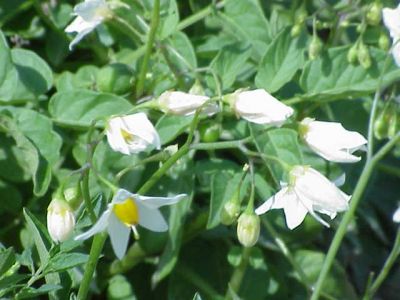Reading the Solanum evolutionary tree

Solanum canasense
By Kurt Stüber [1] [GFDL (http://www.gnu.org/copyleft/fdl.html) or CC-BY-SA-3.0 (http://creativecommons.org/licenses/by-sa/3.0/)], via Wikimedia Commons
Solanum is a large plant genus including for example potato, tomato and also poisonous nightshade, common European weed. I have identified genes of Solanum ancestors that could be very useful in important commercial crops of the genus.
Genus Solanum includes around 1 400 species and includes potato, a staple crop used worldwide. Despite being important from a commercial and evolutionary standpoint, very little is known about the biology of the native European species.
With EU funding, the project 'Solanum in Europe: phylogeny and genetic diversity' (SOLANUM) sifted through 18th century European Solanum species to identify naturally occurring genetic diversity. The research is particularly relevant as two members of the genus, Solanum dulcamara and S. nigrum, are highly resistant to late blight, a scourge to all potato farmers, as it results in considerable losses of crop and income.
I found evidence of duplications in chloroplast DNA that are specific to the clade, or evolutionary branch that includes potato, tomato, eggplant and pepper. Interestingly, this evolutionary feature differs from other plant families, such as the Brassicaceae. The scientists have suggested that the dynamic evolutionary patterns of Solanum when compared with its sister genus Jaltomata can be attributed to recombination between or within chromosomes in the chloroplast.
Using indel markers based on insertion or deletion of bases developed by the project, we investigated black nightshade. Some members of this group are a food source for numerous cultures around the globe. Analysis indicated high interspecies differentiation and that inbreeding is unlikely to be the major driving force behind the genetic structure of the species under investigation. This line of research suggests that indel markers could be used for the insertion of new Solanum germplasm into species for the purposes of breeding or identification of plant specimens.
Other markers used included intron-targeting (IT) sequences from sequencing of the potato cultivar White Lady. Application of IT markers could also be used to develop efficient genetic investigation tools for DNA fingerprinting, marker-assisted selection, genetic mapping and diversity analysis.
The SOLANUM study is the first of its kind and results have formed a comprehensive base for the study of evolutionary relationships within the large group of Solanum species and its close relatives. Applications in agriculture and plant breeding will be very valuable socioeconomically, particularly in the area of disease resistance.
published: 2015-05-08

